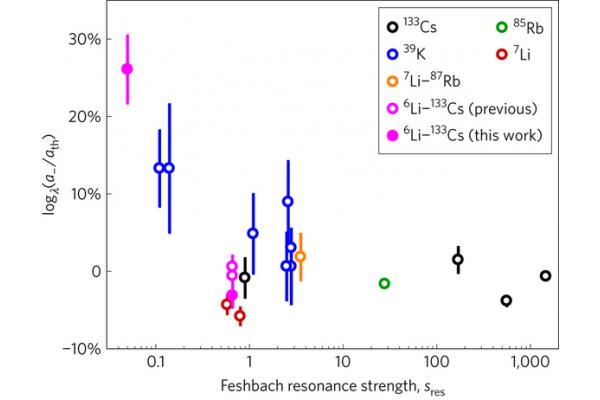
Our paper, "Testing universality of Efimov physics across broad and narrow Feshbach resonances" is published in Nature Physics!
In 1970, Vitaly Efimov predicted that three particles can form a special type of molecule in infinite many ways even when two particles are unable to bind. These "Efimov" molecules are gigantic; their sizes, characterized by the scattering length a, can be as large as 1 micron. Such Efimov molecules have been seen in the past decade by a large number of experimental groups (including us) all over the world! In all the past works, the measured molecular sizes, inferred from a, are all in very good agreement with the predictions based on the universal theory. See Figure 1 above.
As much as everybody likes a universal agreement between experiment and theory, atoms in our lab suggest a more subtle picture. In our cold atom lab, we performed precise measurements based on a mixture of lithium and cesium atoms cooled to 100 nano-Kelvin. Two types of Efimov molecules are surveyed. The one near the stronger Feshbach resonance, where two atoms interact more strongly with strength parameter sres=0.6, shows excellent agreement with the universal theory as well as former works. The other one near the weaker Feshbach resonance with sres=0.05 was measured for the first time and displays a +27% deviation from the theory. This is a clear 5-sigma effect indicating the breakdown of the universality that people have in mind for over a decade!
This work is performed by Dr. Jacob Johansen, Krutik Patel and Dr. Brian DeSalvo in the Chin Lab at the University of Chicago. The research is supported by National Science Foundation, Dr. DeSalvo is supported by the Grainger fellowship. The result is published in Nature Physics (2017).
- Log in to post comments